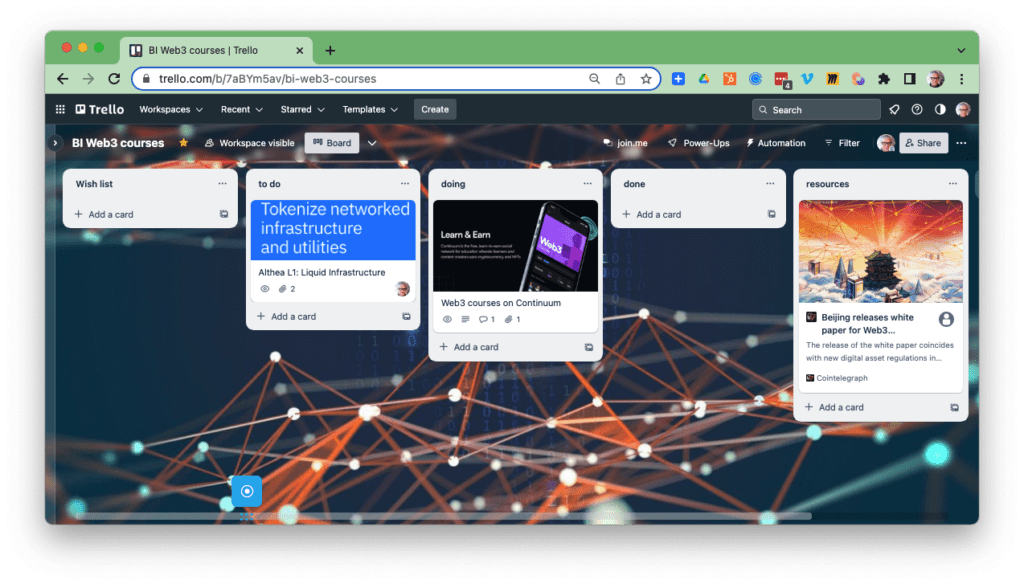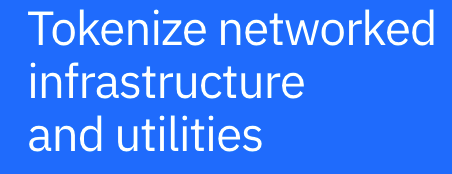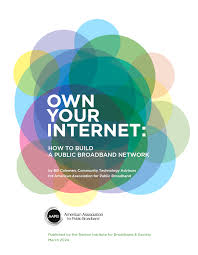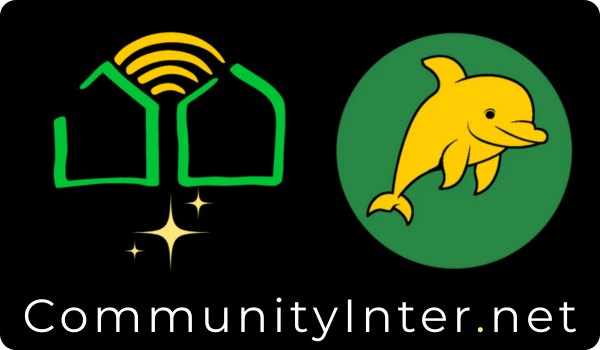Web3 and our Roadmap

Web1 – read | Web2 – read & write | Web3 – read, write & own
We are Planning an “Exit to Community”
My first encounter with Nathan Schneider and Trebor Scholz was in 2017 when I attended a conference at the New School in NYC: “The People’s Disruption: Platform Coops for Global Challenges.” That was where I first learned about the meaning of platform cooperative. Our nonprofit, Broadband Institute Foundation, is designed to be run by the teachers and collaborators who will become the owners of this platform website.
Exit to Community (E2C) is an effort to develop alternatives to the standard model of the startup “exit.” Rather than simply aiming for an acquisition by a more established company or a public stock offering, could startups aim to mature into ownership by their community of stakeholders? Through policy research, popular education, and partnership with interested startups, MEDLab is exploring pathways for making the answer a yes.
Media Economies Design Lab, University of Colorado
Lessons on Worker Ownership from the Main Street PhoenixProject, 2024-09-23
Althea technology is open source like Linux
Recently, there have been exciting new developments about AltheaL1: Liquid Infrastructure, which is at the core of what we are training people to do for building Community Owned Internet Networks. So we have started a new group for Web3 and we have begun project management for what we will be doing in this Trello board. If you are registered for this website, and you would like access, you can send a message to @drron

Since we began, we have been talking about how Althea uses price aware routing protocols that enable you to purchase bandwidth from members upstream from you on the network, and sell bandwidth to members downstream from you. This removes the cost of a billing system, which is about 35% of the total required to maintain your infrastructure.
What is Open Access?
We have also been emphasizing #OpenAccess networks that enables a truly free market and prevents the possibility of an incumbent ISP from owning parts of the infrastructure, so that only their data is allowed to travel through. This would be like FedEx, building its own highways, and not letting any other person or business to use that highway! Here is an excellent video that explains this in less than 90 seconds:
Soon anyone can own part of an open access Network

Soon the ownership of those networks can be tokenized, so that individuals could purchase a few feet of fiber in the #OpenAccess network, and receive returns based on the traffic passing through.
Our direction with AltheaL1
We are creating new courses, and directing people to existing resources to learn about how new technology from Althea helps us to consider implementing some of the best aspects of Web3.
Some background for things referenced in the video
Over $6 billion in assets are managed by public blockchains built with the Cosmos SDK. (Software Development Kit)
Tendermint is a core contributor to the Cosmos Network and creates powerful & secure software for the decentralized future.
Transcript
0:00foreign
0:07but what’s really exciting about the
0:10Althea blockchain is not only the
0:13ability to onboard uh fun well first of
0:16all it’s the ability to onboard funds
0:18more cheaply uh by by uh by using
0:22onboarding into the cosmos ecosystem as
0:24opposed to onboarding into the eth
0:25ecosystem to avoid the ethereum fees
0:28um but also it’s the ability to
0:32integrate more and more defy sort of
0:35functionality uh into the routers
0:37directly so this is stuff that people
0:40are doing informally right now for
0:42example a revenue share on the routers
0:45um is so how we envision that working is
0:47that the um is it the Althea blockchain
0:49has the um you know so so it’s going to
0:53be integrating ethernet so that means it
0:54has the cosmos blockchain layer and sort
0:57of the ethernet uh evm
1:00um the etherman evm within that
1:03and the routers transact on the cosmos
1:06blockchain layer
1:08um which means that we have a native
1:10module that’s very efficient and can
1:11prioritize transactions
1:14um from routers above evm operations
1:18um but then within the evm we’re going
1:21to have Integrations with the router so
1:24it can be possible for a router to say
1:25like hey I’m going to have a I’m going
1:30to have a revenue share contract and
1:31that can be enforced or not necessarily
1:35enforced but that can be actually
1:36operated inside the evm for example you
1:39hold
1:40and for example you can hold an nft
1:42which represents 20 of the revenue of
1:46this router
1:47so in that way you can start to really
1:51compound the effects and manage some of
1:53this
1:54more more automatically and this is what
1:58we get into
1:59um this is this is where we get into
2:01what we call Liquid infrastructure
2:04um which we mostly Envision as a way to
2:08automate and and make
2:13to make Althea routers composable so the
2:17like Revenue made by Alpha routers the
2:19infrastructure uh the the physical
2:22infrastructure can have a composable
2:24revenue share that can then be used in
2:26defy uh which brings about interesting
2:30things uh like
2:32um like like loans against future
2:34Revenue
2:36um and the ability to for example trade
2:39uh trade these nfts which each represent
2:43a share of a particular router’s profits
2:47um
2:48so yeah because this is all integrated
2:50directly into the blockchain where the
2:52transactions are happening in the first
2:53place this can actually be enforced very
2:55smoothly
2:57um and create a sort of decentralized
3:00representation of of
3:03um
3:04of the physical goods and this is this
3:07is the really interesting and promising
3:10sort of stuff as far as additional
3:12developments and new ideas and then
3:14there’s some more boring simple stuff
3:16like for example Cosmos has instant
3:18finality instant finality is great you
3:20don’t have to wait for transactions to
3:21be processed
3:23um so that’s a so that alone is a really
3:25big Improvement as far as simplifying uh
3:30simplifying the code in the routers and
3:31making things generally work better and
3:33more smoothly than they can on xdi or
3:37ethereum
3:40Justin I was I was curious your thoughts
3:43on
3:44um transaction prioritization or
3:47transaction uh
3:50yeah for uh basically different sort of
3:52transaction ordering in the uh Cosmos uh
3:56athia chain yeah so particularly what
4:01we’re going to do because the Althea
4:02chain is a platform that is both for
4:05defy and also for uh you know
4:08infrastructure-based divide and also is
4:10the actual sediment settlement layer for
4:12the routers
4:13is that uh is is that validators will be
4:17set up to pull transactions from uh to
4:22pull router transactions from the MIM
4:24pool with priority
4:27um
4:27and what this means
4:30is that in the case we see something
4:32like what happened yesterday on
4:35um on ethereum with the blur yeah blur
4:38airdrop claim
4:40um is that that can be going on on the
4:43evm and it will fill in the edges around
4:46the like router transactions so the
4:48router transactions will never have to
4:49wait
4:50um and this direct integration that the
4:53routers have with the blockchain will
4:55also allow them uh to do interesting
4:58stuff like for example how frequently
5:00the router should make payments is uh
5:02can be a consensus parameter which means
5:06that uh you know for example if there’s
5:09a lot of capacity on the blockchain you
5:11can pay every five cents or every 10
5:12cents which is better for everybody
5:13because everything is settled more
5:15fine-grained
5:17um you know there’s less bandwidth per
5:19transaction and less to potentially get
5:21confused about
5:23um but as the chain becomes more and
5:25more loaded the consensus parameter for
5:27the minimum size of one of these
5:30transactions can be increased to like 30
5:33cents 50 cents in order to
5:37um in order to sort of manage the load
5:39so this sort of closed feedback loop
5:41allows the Althea blockchain combined
5:44with the altia routers to
5:47um
5:48to deal with spikes and traffic
5:51um very sort of uh in a very Dynamic and
5:55sort of optimized way and you’ll notice
5:58that this is this is essentially a
6:00solution for the microtransaction
6:03scaling problem which is very specific
6:05to the use case of distributed
6:08infrastructure
6:10um so with with uh with
6:13Cosmos we get instant finality so that’s
6:15great we also get uh you know fairly
6:18High throughput higher throughput higher
6:21potential throughput than ethereum if we
6:24really want to push it but combined with
6:26this um but combined with this uh sort
6:30of dynamic scaling mechanism the need
6:33for uh you know l2s or you know
6:37additional complexity on top of the
6:38Althea blockchain is dramatically
6:40reduced and lets us say like hey look
6:42the Althea blockchain is it for this use
6:44case because we can continue to scale
6:47onto a relatively arbitrary size and
6:51number of transactions just just by
6:54virtue of using this highly specific
6:57microtransaction type which we are free
6:59to optimize and tweak and help round out
7:03load spikes and other potential issues
7:07um and then you know what’s really great
7:10is that we have instant finality which
7:12is you
7:13so incredibly simplifying you would not
7:16even believe it when you have to deal
7:18with waiting you know 15 minutes for
7:20finality on an East chain for a
7:22microtransaction you’re trying to send
7:2310 cents and now you got to wait 14
7:25minutes to know if it’s good or not I
7:27mean it’s it’s you would not believe how
7:29complicated that Q system is it’s
7:31thousands of lines of code that are just
7:33like well is the transaction in yet okay
7:35somebody paid us okay do they have a
7:37payment in flight to us that we should
7:38maybe consider accredited
7:40um okay did this payment fail okay now
7:43we have to resend it oh no we already
7:45have a payment in Flight we have to
7:46count that against the next payment we
7:48want to send you would not believe it
7:51um and reducing that complexity is going
7:54to help increase the reliability of the
7:55routers by a pretty large margin in
7:58addition to just increasing the
7:59underlying
8:01um blockchain blockchain um blockchain
8:03um reliability for this purpose you know
8:05the other scaling techniques that I
8:07talked about so as you can see there’s
8:08really a lot of different improvements
8:10for a very tight and very stable system
8:13um which is what we need if we want to
8:15take the Althea blockchain from
8:17something that right now is can is
8:19stable enough for
8:22um so you know right now uh Althea is a
8:24product is stable enough for home
8:26internet
8:27um and it’s more stable than the home
8:28internet a lot of people have
8:30um but we need it to be stable enough to
8:33be the settlement layer for the internet
8:34which is a completely different
8:36challenge it’s a lot more nines on that
8:38uptime
8:40um so that these are the sorts of
8:42changes and the sort of thinking that’s
8:44going to let us get from here to there
8:49so let’s say we have a b c here so
8:54obviously a pays B and B pays C but they
8:57both pay each other in lump sums based
9:00on
9:01um you know based on how many how many
9:04uh cents worth of bandwidth is used so
9:07what this means is that if you’re going
9:09to move a gig through the system from
9:11end to end
9:13um and a uh and a gig worth of bandwidth
9:17is going to generate
9:20um X payments from A to B and then why
9:24payments from B to C but what you have
9:27to understand is that wa is is that
9:30um
9:31it’s not exponential but there’s a
9:33linear because each router adds its
9:36payment amount in the uh okay so in the
9:40modifications of the Babel routing
9:42protocol where we advertise Althea
9:44prices each router adds their price at
9:46each hop to the sum total which means
9:49that as you get deeper into the network
9:52the prices reduce and the uh and thus
9:56the total number of payments also goes
9:58down since they Aggregate
10:00and also as you get more relays behind a
10:04sing of more clients behind a single
10:06relay those payments all aggregate into
10:09the Upstream since you know the Upstream
10:12will be paying uh okay let’s say we have
10:18uh so we have ABC
10:20and then uh C has like 10 routers off of
10:24it so it has 10 clients so if those 10
10:28clients use a lot of data they pay C
10:32pretty pretty pretty like irregularly
10:35maybe once every couple of hours then B
10:39and C
10:40e settle more often than that because
10:42they’re moving more data so maybe once
10:44every 10 minutes and then A and B settle
10:47once every
10:49um settle maybe once every five minutes
10:52but but remember that
10:55at at each level
10:57more data is bundled into this so there
11:02is the ability to sort of continue to
11:05aggregate payments and uh increase
11:08efficiency now I’m trying to come up
11:12with a good expression for the reduction
11:15in complexity
11:17um but
11:19essentially the complexity doesn’t
11:21necessarily uh so if you add 100 routers
11:25you’re not going to be sending a hundred
11:27times as many transactions
11:29you may be sending us sending 100 times
11:31as many value uh um you may be sending
11:34100 times as much value but you’re only
11:37probably going to be sending around uh
11:4070 or 60 times uh more transactions and
11:44then you so that’s already roughly a 50
11:46reduction then you combine this with the
11:49ability to dial up uh the minimum
11:52transaction size as chain load increases
11:55and you can probably cut you know cut
11:58the knees off of the spikes because it’s
12:00the spiky graph right so that means that
12:03let’s say at prime time we go from 10
12:04cents per transaction to uh 50 cents per
12:08transaction uh that’s that’s that is an
12:11exponential reduction in the number of
12:12transactions required so you can get
12:15down to to another you know 10x or so
12:18pretty easily there which means that if
12:21you add 100 times more routers you could
12:23theoretically only have five times more
12:25load uh so that gets you to the really
12:27sort of logarithmic growth that you need
12:30um if you want to uh keep things simple
12:34well
12:36not need a bunch of l2s is essentially
12:38what I’m talking about now
12:41given the way tinderment currently Works
12:43uh the problem is not going to be you
12:45have to upgrade your validators Hardware
12:46the problem is going to be that you run
12:48out of storage uh because even though
12:51I’ve described a nice way to aggregate
12:53the number of transactions and keep us
12:54within a let’s say 500 500 transactions
12:58per block limit fairly easily
13:01um and not have to try and mess with
13:02that we are going to be using uh we are
13:06going to have a lot of full blocks to
13:07store now this is where tendermint as a
13:10consensus mechanism is really really
13:12really great because once again instant
13:14finality and also
13:16it is really light client Focus that
13:19instant finality means that you can
13:22State sync a node and I’m sure those of
13:25you who run uh gravity Bridge validators
13:27are familiar with the concept of State
13:28thinking and that is where you catch up
13:31with the current state of the blockchain
13:33by receiving a a very compact
13:36representation and you don’t necessarily
13:39grab all of the uh all of the like
13:41historical data so on ethereum when you
13:44sync a full node you are State synced to
13:47the current head as far as consensus in
13:50a matter of less than five minutes what
13:52takes days is getting all the
13:53transaction history but if you’re a
13:55router and you are just sending payments
13:57from one router to another you don’t
13:59need transaction history you only need
14:01the current state of the blockchain
14:02which you can sync in just a few
14:05megabytes and even less than that if we
14:09continue to work on proper optimization
14:11uh as as far as being able to store only
14:14part of the chain State Merkle tree
14:17so what this essentially means is that
14:19with the alphia blockchain and probably
14:22a few years of additional development we
14:24will be able to eliminate the need for
14:26routers to talk to full nodes instead
14:28routers will run their own efficient
14:30light client and keep up with the
14:31current state of the blockchain
14:34and they will even be able
14:37um to participate well you’ll need more
14:41power than a normal router for this
14:42you’ll need to be able to store the
14:43entire chain State and the entire chain
14:44State maybe several gigabytes of memory
14:47but the storage we can mostly Outsource
14:49uh to state sinking where very very few
14:53nodes run full archives and instead we
14:57we we get to the current head state of
15:00the blockchain uh purely via statesync
15:03and this brings up a really interesting
15:04question where what happens when uh when
15:08the history of Althea chain after you
15:10know being the settlement layer for the
15:12internet for 20 years the history is
15:13like a billion yottabytes or something
15:15crazy we actually don’t need any of it
15:17we can talk at all and nobody has to
15:19store it ever
15:21um because as long as we can maintain
15:24the current state of the blockchain uh
15:26on a single node and people can State
15:28sync to that we can continue forward
15:30with consensus and this is the property
15:32of tendermen that I really really like
15:35for the Althea blockchain because it
15:36helps solve these long-term problems and
15:38it really fits the Althea philosophy of
15:41um and this is this is something we like
15:43to do with everything that we do uh is
15:46to have solutions that are so radically
15:48simple that once explained you know now
15:50that I’ve explained this uh you’re like
15:52oh man you know where is the blockchain
15:54scaling problem I don’t see it because
15:56we have just sort of danced around the
15:58whole thing
16:02thank you

For additional resources see this document
Own Your Internet: How to build a public broadband network









Responses